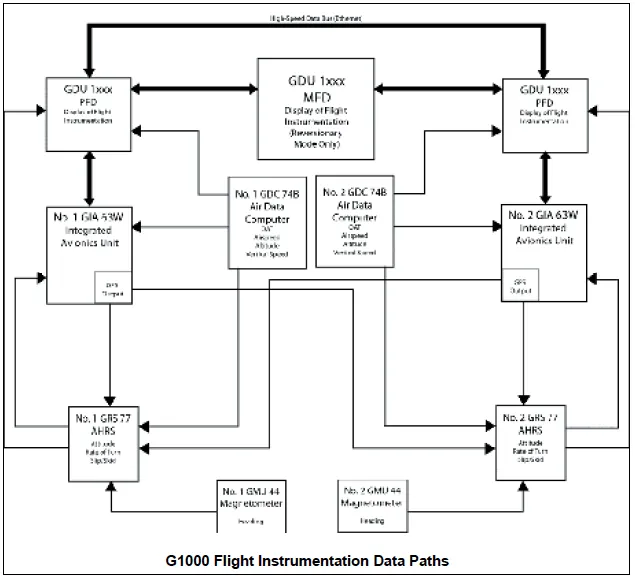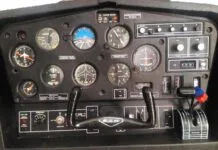Annoying Marketing
Long-time IFR Magazine subscriber and fan here. I have a suggestion, not related to your content (which I love) but to your advertising practices. Two or three times a week I get an e-mail ad asking me to subscribe to IFR Magazine. I cannot block the address it comes from (no-reply@ifr-magazine.com) because there are also legitimate messages coming from it for your subscribers.
The ads are not just wasting my time—they also leave me with a feeling that your company doesn’t know who the customers/subscribers are. For any business, if a regular customer is treated like a first-time visitor, that’s a turn-off. Thus my suggestion: Can you please filter your distribution list for e-mails asking for new subscriptions, and filter out those who are already subscribers?
Thanks for considering my suggestion, and thanks for providing high-quality and meaningful content for instrument pilots month after month.
Martin Pauly
Cedar Rapids, Iowa
Thanks for the note, Martin, and for being a loyal subscriber. You’re absolutely correct. Unfortunately, the editorial side of the magazine is not connected to the marketing side. We can send observations, but we have no oversight. I’m told, though, that you can manage your e-mail preferences, including opting out of all those marketing e-mails, on the web site.
What Altitude?
After reading Tarrance Kramer’s excellent article titled “Incommunicado” in the January 2023 IFR Magazine, I was struck by the description of the pilot’s route and altitude as “by the book.” However readers could incorrectly conclude that flying at the “filed altitude” as described in the article is the right choice. But §91.185 does not refer to filed altitude in the selection of correct altitudes in the case of lost com.
The correct altitude will always be the highest of the altitude assigned, the altitude given to be expected in a further clearance, and the minimum altitude for IFR operations as described in §91.777 which is 2000 feet above the highest obstacle within four miles of the course flown in mountainous areas and 1000 in non-mountainous areas. Flying at the filed altitude is not one of those choices and should not be selected unless it coincides with one of the three choices described above.
Congratulations on a great magazine, to which I have continuously subscribed for over 15 years.
Dave Simpson
Escondido, California
Avionics Block Diagrams
I really appreciated the Avionics Systems Issues article in the March issue. I learned a lot from it, and I sure wish I had a system block diagram for my system. I did ask for one when it was installed but never got one.
Here’s a real world example of an event of the type the article talks about. I have an F33A Bonanza, with a G3X, GTN 750Xi, GFC 500, and G5 backup, and at the time of the event I had been flying with this panel for a bit over a year. I got the plane back from its annual inspection, and on the post-inspection test flight, I got NOCOMP and MISCOMP errors on both the G3X and G5 as soon as I started to taxi, which indicated trouble with the magnetometer. The plane went back to the shop and I placed a call to Garmin, but while waiting for progress, I thought I would just take it up in day VFR and see whether a VFR trip would be an option.
I was astonished at how completely broken the system was. I assumed I would be able to use the GPS in the absence of the magnetometer and fly a GPS course with the autopilot. No way. The GPS was useless, as was the autopilot. I don’t recall the attitude information being bad, but for navigation I found myself with a (very inaccurate) magnetic compass and the need for paper charts, which I did not have. It would have been a full blown emergency in IMC.
The source of the problem turned out to be laughably simple. I had the old fuel hoses from the tip tanks replaced. Unlike the original hoses, which were rubber, the replacements were braided steel inside a rubber jacket. And the left one went right over the magnetometer…
If I ever felt the temptation to launch into IFR immediately after maintenance, I sure won’t in the future!
For another incident, I was flying a Jabiru J230D equipped from the factory with a G3X. On the ground at Flagstaff, Arizona, startup and power on of the avionics was normal, and I began to taxi. As I did, the various sub windows on the G3X—attitude, altitude, airspeed, etc.—began displaying a big red X over each section. Over a period of perhaps 30 seconds, all instrumentation was lost.
The plane was on the ground for several weeks as the local shop and Garmin worked to solve the problem. The answer was interesting. The G3X architecture has a number of LRUs (remote boxes) that communicate with the display over a CAN bus. One of the LRUs is the EIS for the engine instruments. This LRU failed in a manner that had it flooding the bus with garbage, and that took down everything on the bus.
One naively thinks that an LRU failure will be localized to that unit’s functionality, so in this case I would have expected to lose the engine instruments. This failure shows that these systems are not always as robust to single point failures as one would first imagine.
The Jabiru was VFR only, but even so, if this failure had occurred in flight in dark night conditions it would have been a real emergency with the outcome far from certain.
Tim Axelrod
Bandon, Oregon
We’re glad the article was of interest to you, Tim, and thanks for passing along your pertinent real-world experiences.
The system block diagrams are typically located in manuals that are not usually available outside of avionics shops, although your installer should have provided at least a basic interconnect diagram. Garmin has a rather strict policy about divulging this information, but you might talk to the installing shop to see if they could provide just that diagram.
Climb on a Cruise Clearance
In the March quiz, “En-Route IFR” you described the cruise clearance as the ability to CLIMB, descend or level off at any altitude in the block of airspace down to MEA without reporting to ATC. Yet once you report you are leaving an altitude for a lower one, you cannot climb again without an additional ATC clearance. Isn’t this contradictory?
Larry Levin
Lincoln, Rhode Island
Not contradictory. The difference is the report. You can climb or descend on a cruise clearance, but once you report leaving (relinquish) an altitude, you can’t climb back to it. Refer to AIM 4-4-3.d.3.:
The term “cruise” may be used instead of “MAINTAIN” to assign a block of airspace to a pilot from the minimum IFR altitude up to and including the altitude specified in the cruise clearance. The pilot may level off at any intermediate altitude within this block of airspace. Climb/descent within the block is to be made at the discretion of the pilot. However, once the pilot starts a descent and verbally reports leaving an altitude in the block, the pilot may not return to that altitude without additional ATC clearance.
It’s a fine point and easily confused.
Also, to be thorough, note that the AIM says our low altitude restriction is the minimum IFR altitude, which is our responsibility to determine. We generally interpret this to mean MEA since that’s easy to find, but the actual minimum IFR altitude can be lower than the MEA.
Cancel IFR
I have a comment about the first question from April’s quiz. It asks, “When you arrive at a nontower airport, your IFR flight plan is closed when…’ With a given answer of b. “you [pilot] tell ATC ‘Cancel IFR.’”
Yes, just like a contact approach, the canceling transaction can only be initiated by the pilot, but I believe the correct answer is d. “ATC says ‘IFR Canceled.’” If arriving at a nontowered airport, I could transmit “123A, cancel IFR.” But if ATC does not hear me (being too low for example) I am still IFR as far as ATC is concerned. So I would consider ATC acknowledgement as when an IFR flight plan is closed.
Keep up the great work.
Marc Martin
Palmyra, PA
Your point is well taken, Marc. But, with the formatting of quizzes and the wording of the answers being critical, perhaps a slight variation would be even better. We want to preserve the answer of ATC saying you’re cancelled to make sure the reader doesn’t think that ATC can initiate a cancellation. But, you’re right to say that the pilot asking to cancel still needs an acknowledgment. Perhaps the correct answer should have been, “When ATC acknowledges your request to cancel IFR.”





